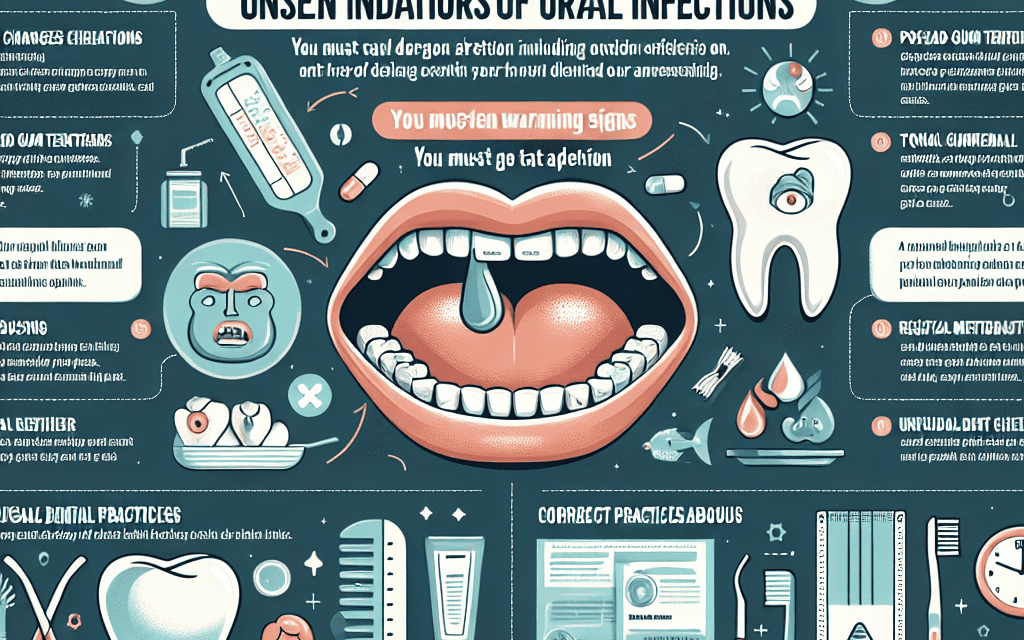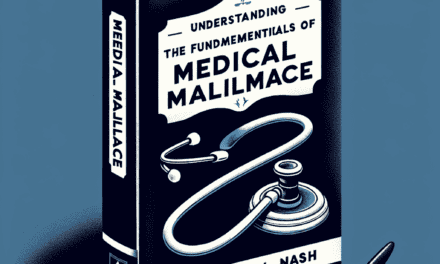Unseen Indicators of Oral Infections You Must Pay Attention To
Oral health is often overlooked, yet it plays a crucial role in our overall well-being. While most people are aware of the common signs of oral infections, such as pain, swelling, or visible lesions, there are numerous subtle indicators that can signal underlying issues. This article delves into the unseen indicators of oral infections that you must pay attention to, providing insights into their implications, causes, and preventive measures.
1. Persistent Bad Breath (Halitosis)
Bad breath, or halitosis, is often dismissed as a minor inconvenience, but it can be a significant indicator of oral infections. While it can result from dietary choices or poor oral hygiene, persistent bad breath may signal deeper issues, such as gum disease or oral infections.
Halitosis is typically caused by the breakdown of food particles in the mouth, leading to the growth of bacteria that produce foul-smelling compounds. However, when bad breath becomes chronic, it may indicate:
- Gum Disease: Periodontal disease can lead to the accumulation of plaque and tartar, which harbor bacteria that produce sulfur compounds, resulting in bad breath.
- Oral Infections: Infections in the mouth, such as abscesses or necrotizing ulcerative gingivitis, can also produce persistent bad breath.
- Systemic Conditions: Conditions like diabetes or liver disease can manifest as bad breath due to metabolic changes.
To address halitosis, it is essential to maintain good oral hygiene practices, including regular brushing and flossing, and to visit a dentist for professional cleanings. If bad breath persists despite these measures, it is crucial to seek medical advice to rule out underlying infections or systemic conditions.
2. Changes in Taste Sensation
Changes in taste sensation, known as dysgeusia, can be an overlooked indicator of oral infections. While many people associate taste changes with illnesses like colds or flu, they can also signal oral health issues.
Infections in the mouth, such as oral thrush (a fungal infection) or periodontal disease, can alter taste perception. The following factors contribute to taste changes:
- Infection: Oral infections can lead to inflammation and changes in the oral mucosa, affecting taste buds.
- Medications: Certain medications, particularly antibiotics, can disrupt the balance of oral flora, leading to taste alterations.
- Dry Mouth: Conditions that cause dry mouth (xerostomia), such as Sjögren’s syndrome or medication side effects, can impair taste sensation.
Individuals experiencing changes in taste should consult a healthcare professional to identify the underlying cause. Treatment may involve addressing the infection, adjusting medications, or using saliva substitutes to alleviate dry mouth.
3. Gum Recession and Sensitivity
Gum recession is a common yet often unnoticed sign of oral infections. It occurs when the gum tissue pulls back from the teeth, exposing more of the tooth or its root. This condition can lead to increased sensitivity and a higher risk of cavities and infections.
Several factors contribute to gum recession, including:
- Poor Oral Hygiene: Inadequate brushing and flossing can lead to plaque buildup, which irritates the gums and causes them to recede.
- Periodontal Disease: Advanced gum disease can result in significant gum loss and tooth mobility.
- Genetics: Some individuals may be genetically predisposed to gum recession.
Gum recession can lead to sensitivity to hot and cold temperatures, making eating and drinking uncomfortable. If left untreated, it can result in tooth loss. Regular dental check-ups are essential for monitoring gum health and addressing any signs of recession early on.
4. Oral Lesions and Sores
Oral lesions and sores are often visible signs of oral infections, but not all lesions are easily noticeable. Some may appear as small, white patches or ulcers that can be mistaken for minor irritations. However, persistent or recurrent lesions can indicate underlying infections or systemic conditions.
Common types of oral lesions include:
- Aphthous Ulcers: These painful sores can be triggered by stress, hormonal changes, or certain foods and may indicate an underlying immune response.
- Oral Thrush: A fungal infection characterized by white patches on the tongue and inside the cheeks, often seen in immunocompromised individuals.
- Herpes Simplex Virus: Cold sores can recur and indicate an active viral infection.
Monitoring the duration and frequency of oral lesions is crucial. If sores persist for more than two weeks or are accompanied by other symptoms, such as fever or difficulty swallowing, it is essential to seek medical attention. Treatment may involve topical medications, antifungals, or antiviral therapies, depending on the underlying cause.
5. Changes in Oral Microbiome
The oral microbiome plays a vital role in maintaining oral health. An imbalance in the oral microbiome can lead to various oral infections and diseases. Changes in the composition of oral bacteria can be subtle and often go unnoticed until significant issues arise.
Factors that can disrupt the oral microbiome include:
- Poor Diet: High sugar and processed food intake can promote the growth of harmful bacteria, leading to infections.
- Antibiotic Use: Antibiotics can disrupt the balance of beneficial bacteria, allowing pathogenic bacteria to flourish.
- Smoking: Tobacco use can alter the oral microbiome, increasing the risk of periodontal disease and oral cancers.
To maintain a healthy oral microbiome, individuals should focus on a balanced diet rich in fruits, vegetables, and whole grains. Probiotics may also help restore balance in the oral microbiome. Regular dental visits are essential for monitoring oral health and addressing any signs of infection early on.
Conclusion
Oral infections can manifest in various subtle ways that are often overlooked. Persistent bad breath, changes in taste sensation, gum recession, oral lesions, and alterations in the oral microbiome are all unseen indicators that warrant attention. By recognizing these signs and seeking timely medical advice, individuals can prevent the progression of oral infections and maintain optimal oral health.
Regular dental check-ups, good oral hygiene practices, and a balanced diet are essential components of oral health. By being proactive and attentive to these unseen indicators, you can safeguard your oral health and overall well-being.





